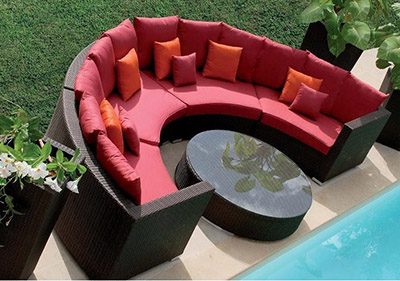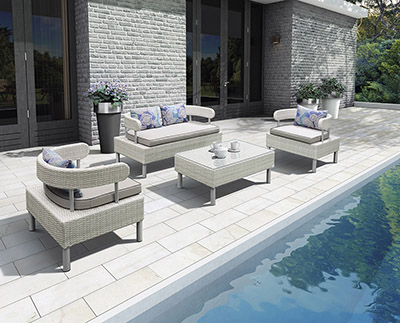In the printing process, the phenomenon of dirt on the blank part of the printing plate often occurs, which not only reduces the printing rate of the printing plate, but also affects the printing quality. The reasons for the formation and exclusion methods are analyzed and discussed for reference.
First, the dirt caused by the printing plate.
1, underexposure.
Underexposure will cause the photosensitive layer of the blank part of the printing plate not to be completely decomposed after the action of ultraviolet light, and cannot be completely dissolved in the alkaline developing solution during development, thereby causing the upper dirty. The degree of decomposition of the photosensitive layer is in direct proportion to the intensity of the light and the length of the irradiation time, so the selection of the light source and the exposure time are important factors in determining the exposure. Different original versions and PS versions of different manufacturers have different exposure times. We can determine the exact exposure time using a continuous ash scale or Bruner test strip.
The selected print source should have the following features:
1 The layout illumination should be even, so that the four corners and the central part of the plate can be clearly illustrated and the small dots can be aligned.
2 The light source should have a small heat to protect the photosensitive layer from temperature.
3 light source spectrum in the 350 ~ 460nm region. 4 No environmental pollution, no harmful gas precipitation. 5 Low price, simple operation and long service life. The common printing plate light source includes a xenon lamp, a metal halide lamp, and an efficient and fast printing lamp.
2, underdeveloped.
The causes of underdevelopment are:
1 lack of development time;
2 developer concentration is not enough;
3 The developer temperature is low. Different pre-sensitized lithographic plates have different alkali resistance and require different developer concentration. Therefore, they are sometimes prepared in accordance with the concentration specified by the PS plate manufacturer. The temperature of the developer should be controlled between 20 and 25 °C. The development time is determined by a gray scale or a test strip, typically about 1 minute.
3, baking version. Roasting is a process that is used to increase the printing rate of printing plates. However, before baking, it is necessary to completely remove the dirty and apply a protective agent, and bake at a constant temperature of 230 to 250°C for 5 to 8 minutes. Otherwise, the photosensitive layer will be carbonized and dirty.
Second, the dirty machine caused by improper adjustment during printing.
1. The pressure between the printing plate and the blanket is too large, so that the oxide film of the blank part is worn out, the sand becomes lighter, and the adsorption is weakened and the upper part becomes dirty. Therefore, under the premise of ensuring that the imprinting is robust without spreading, the even use of the minimum pressure can be adjusted by pressing the fuse. The ideal indentation thickness is generally 0.1 mm.
2. The pressure of the water roller, the ink roller and the printing plate is too high, the friction force is enhanced, the sand spot is subject to wear and chemical damage, so that the hydrophilicity of the blank part is reduced and the dirt is dirty. At this time, the steel blade is used to adjust them. pressure. Taking the J2108 machine as an example: The indentation of the water roller and the printing plate is 4 to 6 mm, and the indentation of the ink roller and the printing plate is 5 to 6 mm.
Third, other.
1. During printing, there are dirty marks on the PS plate, on the film base, and on the glass of the printing machine, which prevent the light from decomposing and becoming dirty. It can be removed by the “double scattering method of the scattering filmâ€, but the exposure time should not be too long.
2. The ink layer on the layout is too thick, so that the ink layer spreading causes the blank part of the printing plate to have a reduced water-repellency and become dirty. We should make the ink layer thicker when the print area or the structure of the paper is loose and rough, and the higher the dot number, the thinner the ink layer.
There are many reasons for the dirtyness of the blank space on the PS version. It is also very complicated, but as long as we carefully analyze and strictly control, we can prevent it from happening. (Text / Shen Shifeng)
Outdoor Sofa Furniture
Outdoor sofa furniture is suit for outdoor garden usage for long time. The material is UV resistant PE rattan and 1.2mm thickness aluminum frame with powder-coated.
Outstanding comfort and structural integrity make our Outdoor Sofa Furniture Collection a welcome addition outdoors. Rattan fibers are smoothly double woven around concealed powder-coated aluminum frames. Gently angled backs and wide arms encourage restful lounging. The industry`s best high-performing fabrics encase the thick, double-wrapped foam cushions.
· Traditional forms with a spacious, inviting scale
· Handwoven premium resin wicker UV resistant
· Rust-resistant powder-coated frames
· Cushions included with 30 density sofa foam
· Versatile tempered glass tables
· Cushions also available with 100% waterproof fabric.
Outdoor sofa Furniture contain sectional sofa, deep seating sofa, round or semi-round sofa furniture, and garden set.




If you have any questions, please contact with us directly. Outdoor Sofa Furniture are produced
by Golden Eagle Outdoor Furniture With High Quality and Good Appearance. Welcome you can visit our Factory.For any inquiry,Please send mail directly to us.
Rattan Outdoor Furniture,Outdoor Furniture,Outdoor Patio Furniture,Outdoor Garden Furniture,Outdoor Furniture Set
Golden Eagle Outdoor Furniture Co., LTD. , https://www.gepatio.com